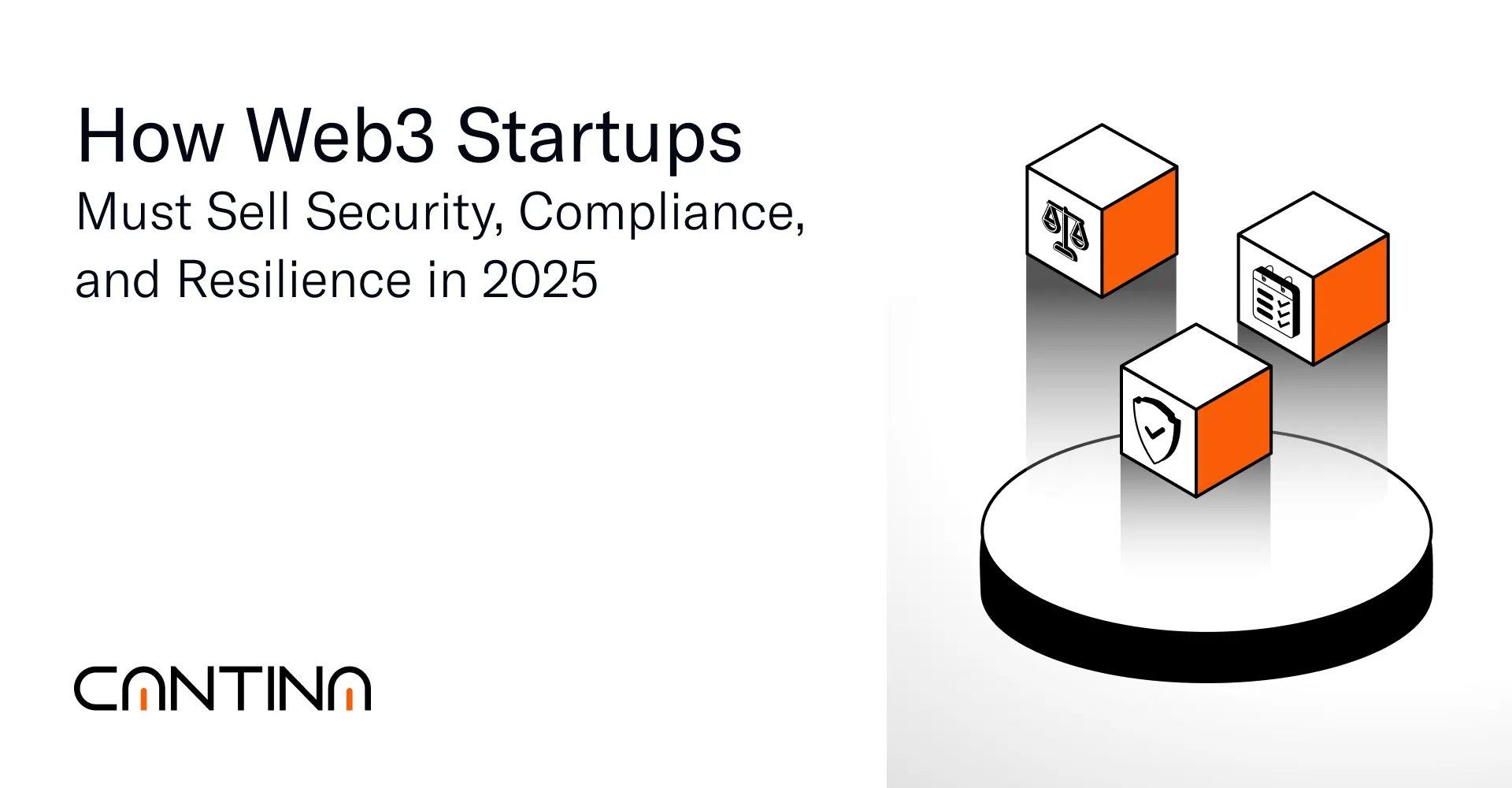Introduction
The fundraising landscape for Web3 organizations has changed fundamentally. Investors and institutions no longer prioritize narratives or momentum alone. They demand proof that an organization can withstand the risks that have repeatedly undermined this industry: theft, fraud, collapse of token mechanics, and governance failures. This guide outlines the credible fears procurement officers, risk managers, and venture capital partners use to qualify or disqualify organizations. Each fear is illustrated by a precedent and mapped to the security, compliance, and governance controls that now serve as the foundation for institutional credibility.
Five Fears That Define Institutional Due Diligence
Custody and treasury compromise. Investors have seen billions lost to exchange hacks and operational failures. A single compromise of treasury or customer custody can destroy confidence, trigger redemptions, and end an organization’s viability. Institutional buyers treat this as a baseline risk. Proof of segregation, use of qualified custodians, and hardened multi-party control are now minimum expectations.
Executive fraud and operational misuse. The collapse of FTX showed that insider misconduct and absence of oversight can erase value faster than market volatility. Procurement now requires transparency into governance, regular attestations, and control environments that prevent executives from operating unchecked. Without this, no investor or enterprise buyer will move forward.
Liquidity collapse of tokenized assets. Terra demonstrated how algorithmic or poorly designed token systems can fail catastrophically, taking institutions and retail participants down with them. Institutions now ask for redemption stress tests, reserve proofs, and evidence of liquidity management policies before considering a tokenized asset exposure.
Cross-chain vulnerabilities. Bridges and wrappers create timing and synchronization windows that adversaries exploit. The largest digital asset thefts in recent years occurred through bridge compromises. Institutional due diligence treats all cross-chain mechanisms as high risk. Controls such as canonical state proofs, synchronous blacklist validation, and throughput limits must be presented to counterparties.
Oracle and protocol manipulation. Oracles are the backbone of pricing, reserves, and redemption logic. Manipulated feeds or stale data have led to cascading liquidations and destabilization across protocols. Institutions now expect redundancy, staleness thresholds, and documented circuit breakers as standard design principles.
The Institutional Checklist
Organizations preparing to raise capital or close enterprise partnerships in 2025 must arrive with evidence across four categories.
First, governance and entity transparency. Institutions will require an entity map showing legal structure, jurisdiction, and corporate control. They will also request documentation of governance processes, upgrade authority, and privileged key management.
Second, custody and treasury assurance. Proof that customer assets are segregated, held with qualified custodians or MPC-based controls, and subject to continuous reconciliation is required. Evidence must include attestations, reconciliation logs, and audit trails.
Third, security and operational maturity. Organizations must provide recent high-signal smart contract audits, remediation logs, incident response policies, and evidence of monitoring. Monitoring outputs should include anomaly detection and operator response metrics.
Fourth, compliance and regulatory posture. A documented AML and sanctions program, integration with screening tools, insurance certificates, and draft service agreements with defined recovery objectives must be available for diligence.
Evidence Procurement Officers Expect
Procurement is not satisfied with claims. They require proof that controls operate as designed. Cantina advises organizations to prepare demonstrable evidence in advance.
One example is a reproducible exploit simulation. Organizations should be able to replay a known class of attack on a test network and present the patched remediation. Another is reconciliation demonstration, showing how seeded mismatches between on-chain and off-chain ledgers are caught and resolved. Governance trails should also be provided, showing historical admin actions and the approvals and timelocks that secured them. Finally, organizations should provide results of stress testing redemption surges, oracle manipulation attempts, and bridge pauses, along with detection and response times.
Control Patterns That Institutions Trust
Certain architectural patterns consistently convert cautious buyers into committed partners. Canonical proofs of blacklist and sanctions state must be published and verified at every mint, transfer, and redemption surface. Governance duties must be segmented so that no single actor can change core logic, upgrade contracts, or move treasury without multi-party and time-delayed approval. Monitoring and instrumentation must be treated as product features. Mean time to detect, mean time to respond, and reconciliation intervals should be reported with the same rigor as transaction throughput.
****What Institutional Buyers Need to See
The most effective fundraising begins with a clear articulation of the worst credible scenario that could collapse the organization. Reference to past precedents such as FTX, Terra, and bridge compromises makes the scenario credible. Immediately follow with evidence of the controls already in place, the remediation efforts underway with specific timelines, and the independent attestations that validate those efforts.
Institutional Readiness in 60 Days
A structured remediation sprint can elevate a project to institutional standards. Here’s what procurement officers expect to see - mapped to the four pillars of Web3SOC:
Week 1–2: Operational Clarity
- Finalize legal structure and custody map
- Assign governance responsibilities and privileged key control
- Define recovery objectives and SLAs
Week 3–5: Security Maturity
- Commission or update a high-signal audit
- Implement MPC or multisig for privileged operations
- Produce monitoring outputs and incident response logs
Week 6–7: Financial & Technical Testing
- Run adversarial simulations on bridge, oracle, and redemption mechanisms
- Document remediation, detection, and response times
- Conduct stress tests and reconciliation demos
Week 8: Proof of Readiness
- Compile procurement pack: audit results, governance logs, custody attestations, simulation results, insurance coverage, and compliance materials
Conclusion
Security and compliance have become the foundation of Web3 fundraising and enterprise growth. They are not optional costs but prerequisites for market access. Institutions evaluate Web3 startups not only for innovation but also for risk reduction. Organizations that arrive with controls, monitoring, and evidence can raise capital and scale. Those that arrive unprepared will face extended remediation cycles or be excluded entirely.
Cantina collaborates with organizations to execute this remediation blueprint, providing high-signal audits, adversarial simulations, and compliance-aligned documentation. Through the Web3SOC framework, we ensure that Web3 startups are not only innovative but also institutionally defensible.
Contact Cantina to prepare your organization for institutional due diligence.




